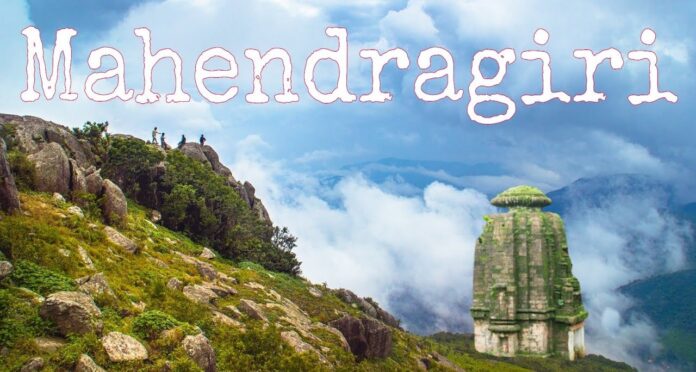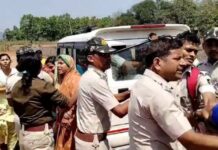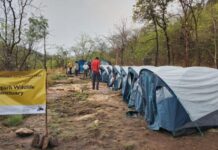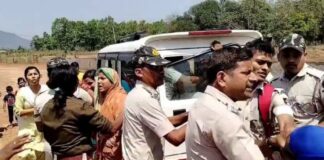A travelogue by Tapaswini Harichandan
The enchanting & spellbinding beauty of the Eastern Ghats is the perfect to spot Odisha’s treasure trove of biodiversity and it reminds us of how powerful and clever Mother Nature can be. It has a certain aura and mysticism to it.
Recently, in another of my yearly visit to Odisha, my native, we happen to make a trip to this beautiful place called Mahendragiri hills. Every year, our family makes a plan to visit places in Odisha which we haven’t been to earlier. It’s a great way of catching up on the cultural aspect of my native state. The whole itinerary of our journey was planned by my sister-in-law and brother-in-law. Hence, they arranged for the stay and the places to visit nearby the destination we have planned.
So this time we planned to visit the Mahendragiri hills in the Eastern Ghats. This place is situated along the Odisha-Andhra border, and at one point the borders crisscross the road almost every 2-3 km. Mahendragiri, a part of the Eastern Ghats, is the second-highest point with 4925 ft (1501 mts) above the sea level. So we started our journey from Bhubaneswar around 7:30AM & 30 minutes after hitting the highway, we halted to have some breakfast. We had some hot “bara & matara tarkari” (meduvadai & white peas curry). The breakfast was delicious, and sumptuous for the price. We also had some kulhad tea to compliment the meal. Our break was done, and it was time to continue our trail.
After driving almost 100 km on the six-lane golden quadrangle road, we took a diversion on the right towards Paralakhemundi. This place is situated on one of these hills in the Gajapathi district. It took us further 3 hours to reach there. It’s a beautiful road surrounded by hills, villages and farmlands. The most interesting thing was that the villages on the left side of the road belong to Odisha while the ones on the right side village belong to Andhra Pradesh. Soon the roads became ascending as we started climbing the hill. The beauty of the Eastern Ghats was enchanting. The green around the road were serenading. There were different variety of trees and plants such as coconut, banana, cashew, mango and date trees. I was surprised seeing date trees on a hilly region, as I have only seen them grow in deserts. There were many spices and medicinal and plants too. We were all awestruck by the beauty of this place.
Vrindavan Palace
Finally we reached Paralakhemundi. We had lunch there, and then took some rest. After the halt, we decided to go see the Basanta Bhavan also known as the Vrindavan Palace. This palace served as the summer palace for Yuvraj, son of the Gajapati king Krushnachandra Gajapati Dev, and his wife. Krushnachandra Gajapati Dev is regarded as the architect of an independent and united Odisha. He was a reputed freedom fighter, great educationist and philanthropist. The palace has a huge gate. Inside lay a beautiful garden cut in between by a small path that leads to the palace. The palace is a huge 3 storey white structure. It has the typical essence of a Hindu-British fusion architecture. It supposedly built on 40 pillars. We got down from the car. I took out my phone and started capturing this beautiful structure. This palace is situated on the banks of Mahendratanaya river. The best part of the river being that it serves the border of the two states.
The palace has a huge verandah and portico. There was a huge staircase leading to floors above. We went to the first floor, it also had a huge verandah and many rooms. All the rooms interestingly had the river view. It also had a humongous underground bath, which was used by the Queen mostly. It also has a dancing Hall. The foreign guests of the king were allotted rooms too. But as India become a democratic country, the flora of this palace was gone and lost and eventually in 1959, the palace was handed over to the education department. It was made into a college for some time, but then later on it was handed over to the Odisha tourism, which is managing it still. The care taker took us through a long secret passage which connects this palace with the main palace. We spent a good amount of time there in admiring and experiencing the palace, and it’s beautifying surrounding. The dusk had set in, and we left the palace. It felt peaceful in experiencing the rich history engraved in this palatial figure. We left the palace and retired for the day at the guest house arranged by my Sister in law and Brother in law. We were served a very homely dinner.
Next Morning, I woke up when someone knocked on our door. I glanced at my watch and it was 6 in the morning. Deepak and Yash (My husband and son) were still sleeping. Siri (my dog) was sleeping on the sofa. I got up and opened the door, it was the caretaker who had come to serve some fresh tea. We got ready by 7.45am and had breakfast together. The breakfast consisted of many spread of Odia delicacies.
Gandahati waterfall
After the breakfast, we started for our day. Our next destination was Gandahati waterfall. It is approximately 26 km from Paralakhemundi. The road was very scenic with lush green on both the sides of the road. Although the road had many hairpin bends, we reached the waterfall after 45 minutes of drive. A beautiful garden welcomed us near the entrance of the water fall. It was surrounded by lots of beautiful plants. So many swings were there. Some beautiful terracotta works too were present. When we reached at the end of the garden we saw the huge waterfall. Water is falling from a hilltop. It looked mystique and magical. As the water hit the ground, it created a pond sort of a thing. This has stairs to go there and dip your leg or just to stand there. Many people had come there, playing with the water and taking selfies. We, too, went inside the water. The water was so cool and was so crystal clear. Underneath the pool of water were many pebbles. I collected some of them. We all did the usual touristy thing of talking group pictures and selfies. It was so peaceful despite the loud noise of the water crashing down. We spent some time and then left for our next destination.
Chandragiri – Buddhist Monastery
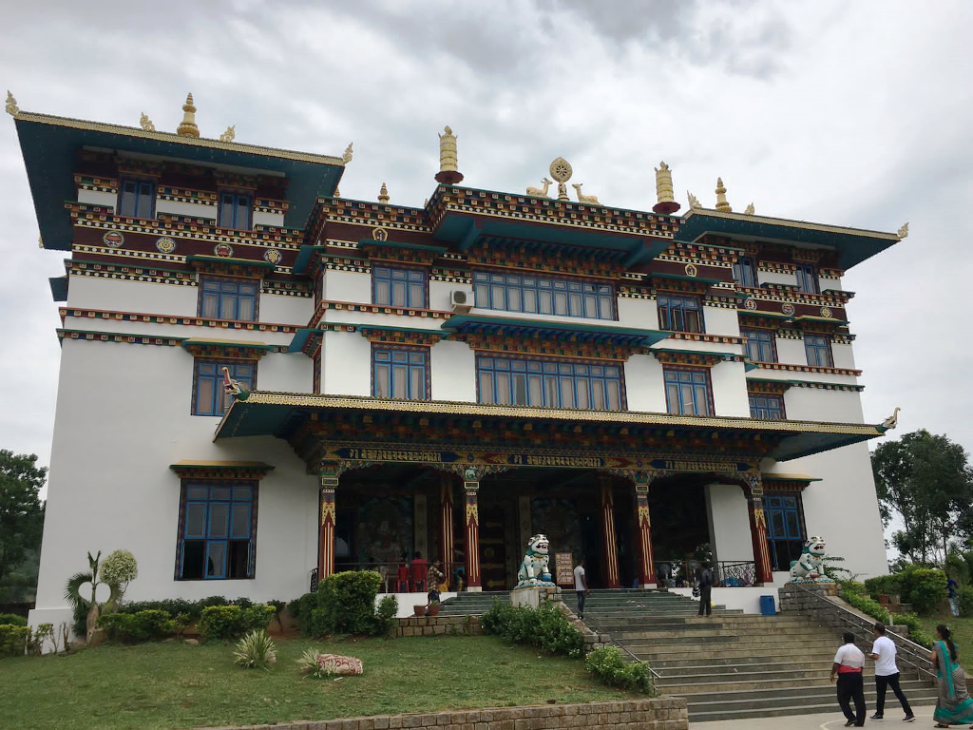
After driving for almost about 2 hours through the scenic Eastern Ghats, we reached at Chandragiri Buddhist monastery or the Padmasamvaba vital (named after Acharya Padmasamvaba who is believed to have spread Buddhism in Tibet in 7th century). In 1959, after the Chinese invasion and occupation of Tibet, around 85000 Tibetans including their spiritual leader, the 14th Dalai Lama, forced to move out from their own country and seek shelter in India and other neighbouring and nearby countries. Some of them came to India. India has 4 settlements of Tibetans and one of them is Chandragiri temple. The whole monastery is developed in 10 acres of land. There is a beautiful and huge garden on both the sides of the pathway which leads to the main temple. All the inmates of the monastery took care of the maintenance of the park. The Buddha statue inside the monastery is about 20 ft tall, which is inside a large hall. There is a school too which teaches Tibetan studies. On asking one of the inmates, we found out that there are about 200 monks residing inside the monastery. There are hostels allotted to them. The temple was so beautiful. The entire temple was decorated with large Buddhist style paintings depicting of their mythological tales. The temple had the primary colours of Red, Blue, gold and slight patch of green. Since the Buddha Purnima was around the corner, there was a festive atmosphere inside the monastery. Another inmate told us that since Buddha Purnima is approaching they spend the whole day inside the temple praying. During this time they don’t cook anything at their hostel or houses. So during this time they only consume the food or Prasad prepared in the temple which is first offered to Lord Buddha. Some of them asked us to have lunch with them. They were very hospitable and soft spoken. Since we were running out of time, we couldn’t agree to their lunch offer.
We returned back, but I would definitely want to go back and spend some more good and quality time out there. The religion of Buddhism has always made me admire it for its strong emphasis on calmness and peace. On our way back we stopped at another arranged guest house at Berhampur, where the staff over there had prepared some mouthwatering dishes ranging from prawn malai curry, mutton masala, fish fry and 4 to 5 other vegetable spreads. Sadly, I couldn’t enjoy it properly as I was down with stomach upset. We then finally started from there at about 4 pm, leaving behind the amazingly beautiful Eastern Ghats. It beauty is spell-bounding, and breathtaking.
How to Reach
Situated around 135 km from Ganjam district headquarters of Chhatrapur, Mahendragiri can be reached from Berhampur via three routes:
- The first route is up to Paralakhemundi, 115 km from Berhampur via Ichhapur – Palasa
- The second route is from Berhampur to Paralakhemundi via Digapahandi, R Udayagiri and Rayagada which runs over a distance of 173 km
- The third route is 126 km from Berhampur via Ichhapur-Jarada-Kaipur and Paralakhemundi




